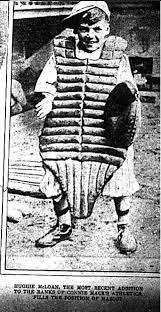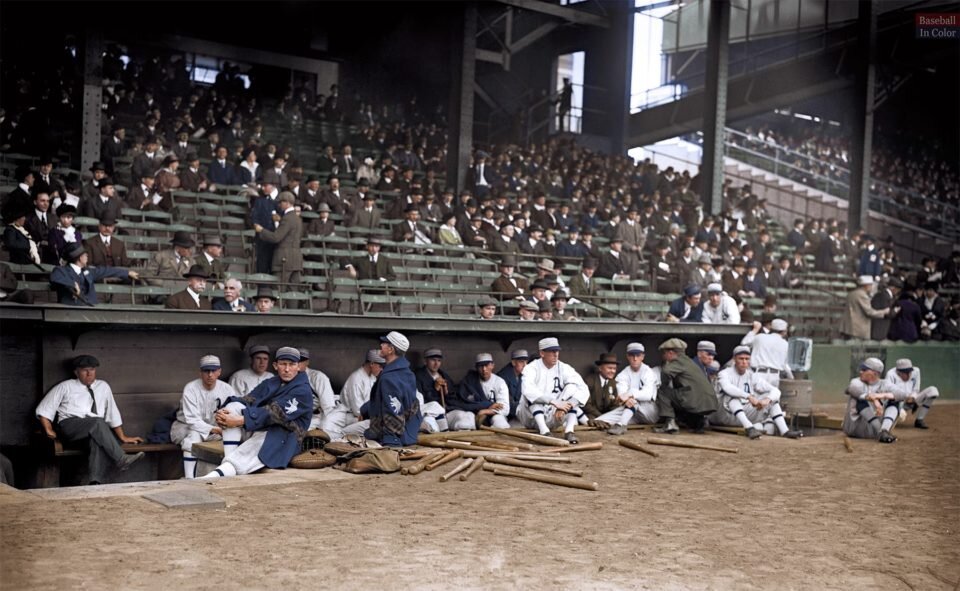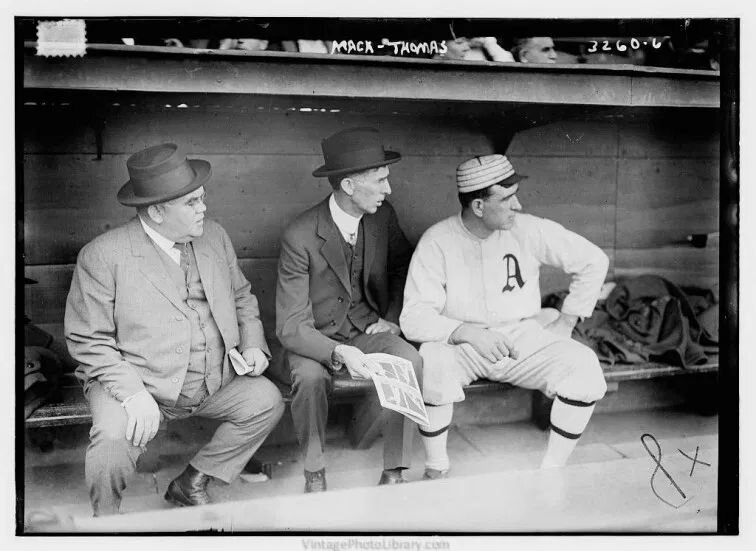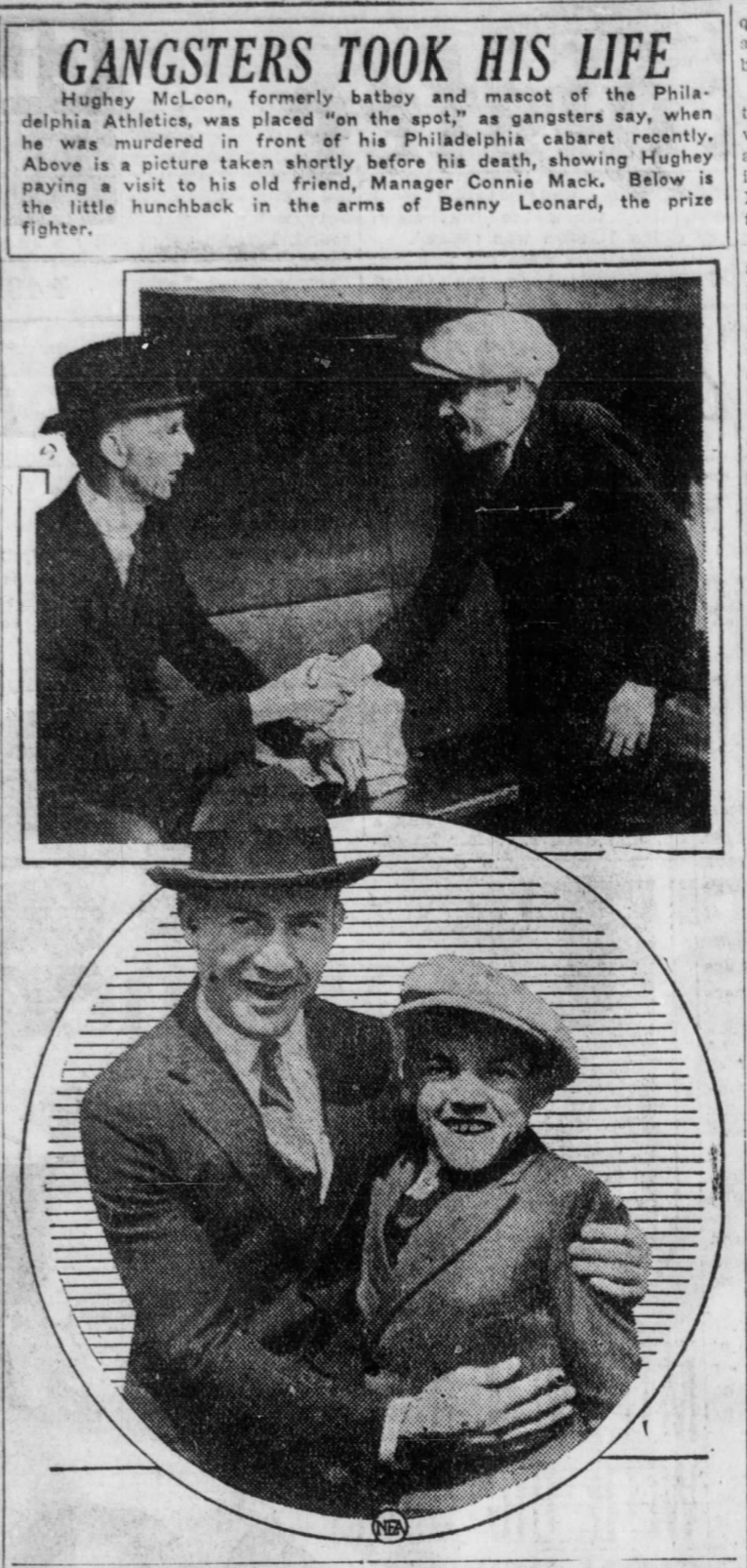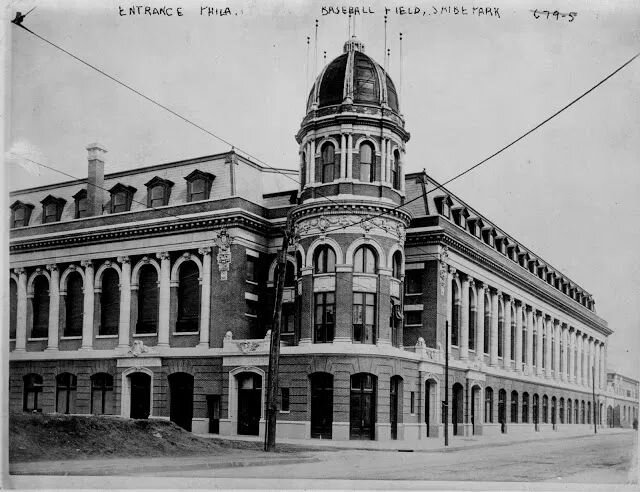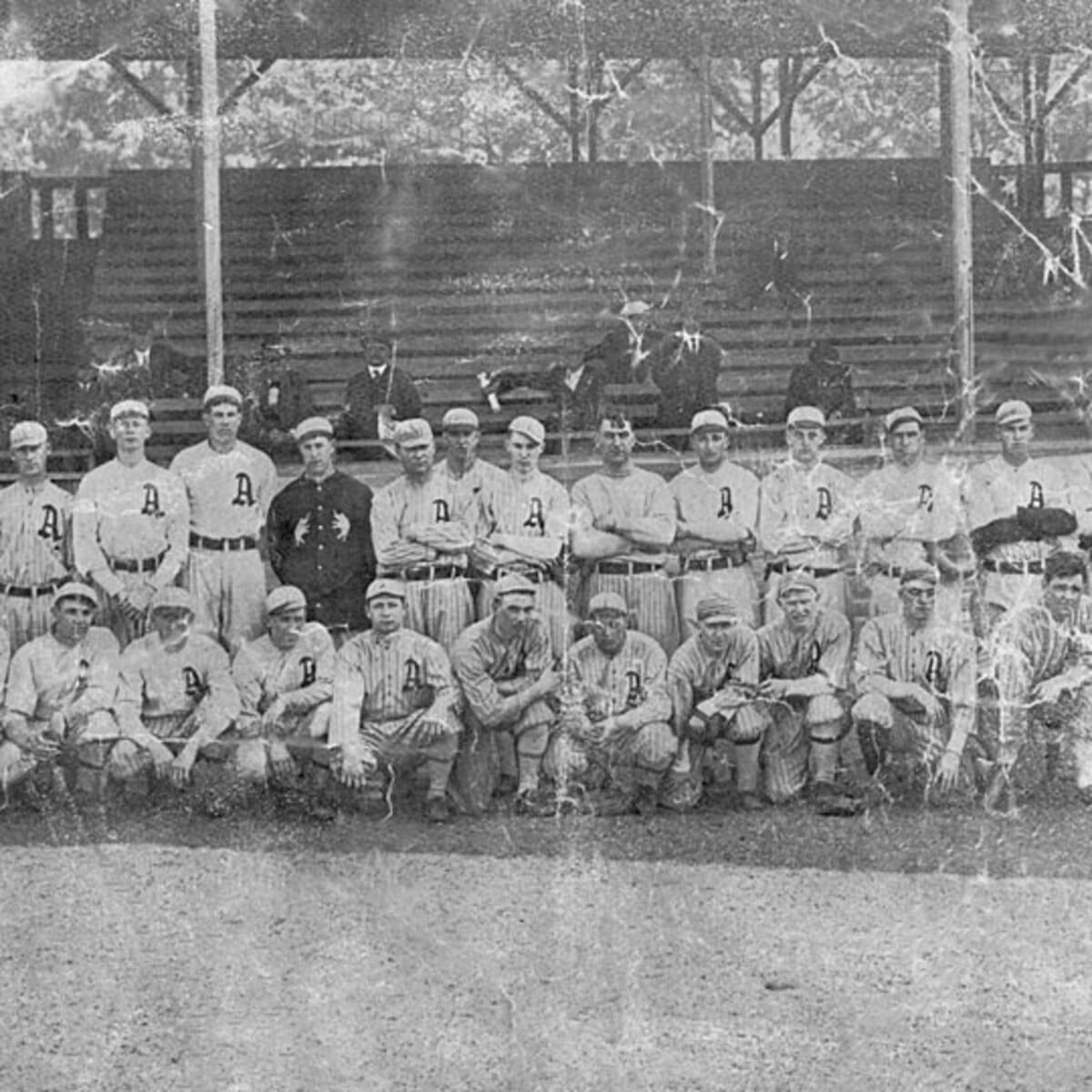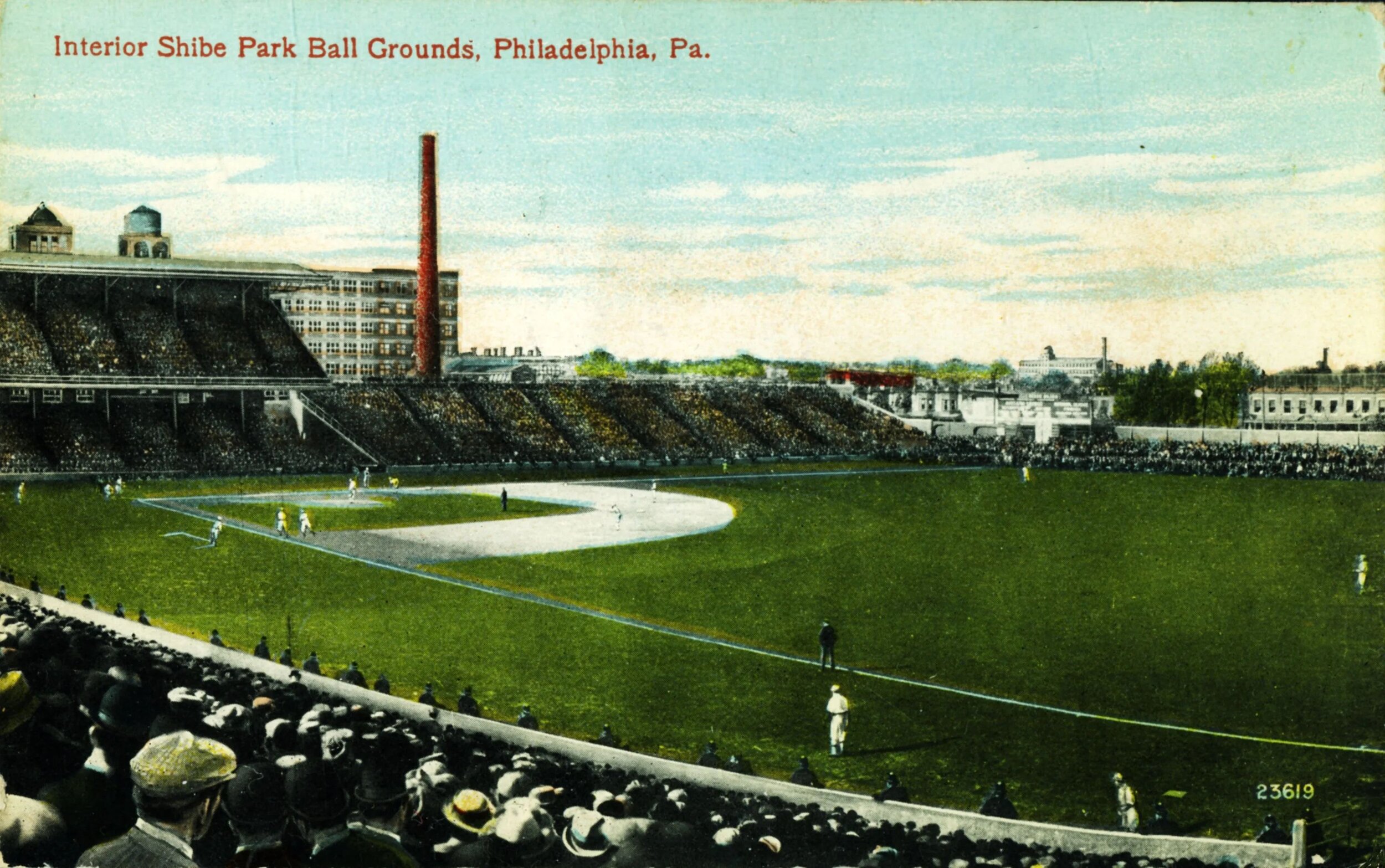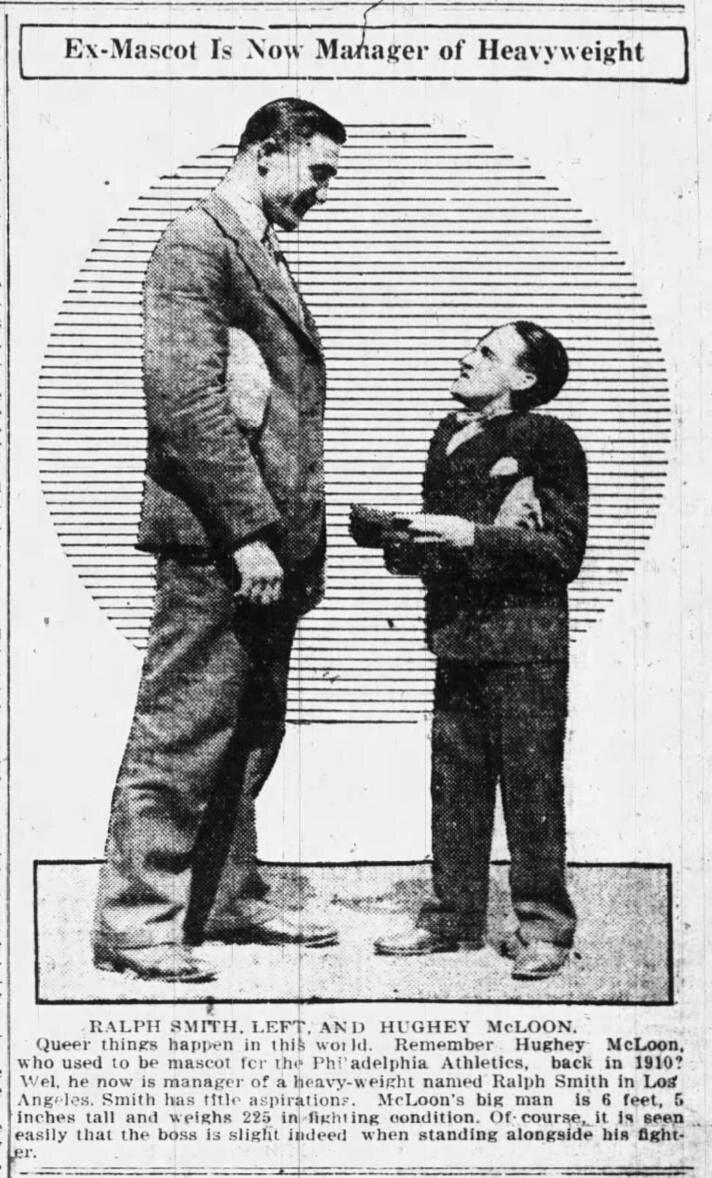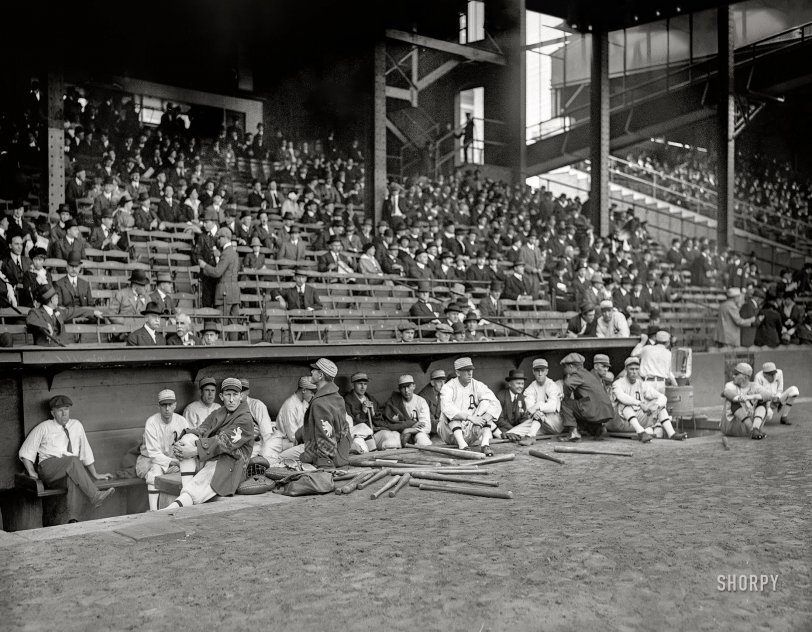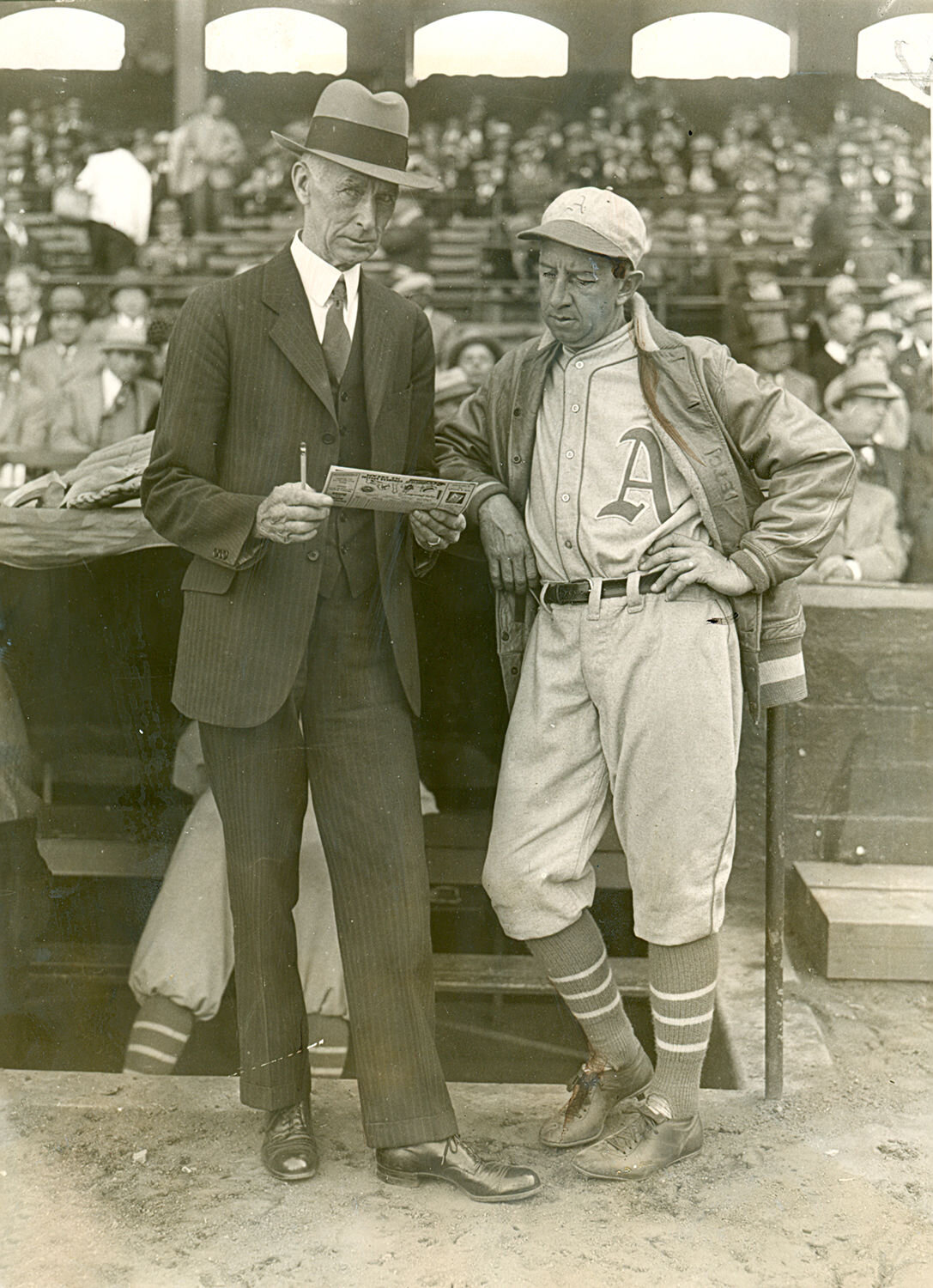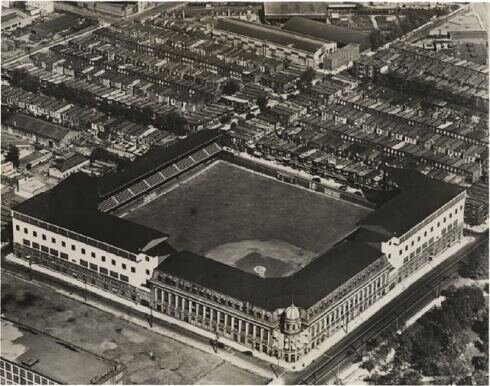The Roarin' Twenties was a time of Prohibition, jazz, gangland murder - and, for baseball, an age of superstitious magic - when even future Hall of Fame players believed that rubbing the hump of a hunchback would guarantee a hit at the plate.
Irreparably disfigured by a childhood playground seesaw accident, South Philadelphia teenager Hughie McLoon never grew taller than 49 inches; but in an era when baseball club mascots were chosen with as much care as starting pitchers(!), McLoon prevailed upon legendary Philadelphia Athletics owner Connie Mack to hire him as the team's lucky charm in 1916.
Reeling from an unfamiliar last-place finish in 1915 (after winning four American League pennants and three World Series titles between 1910-14), Mack's A's needed all the help they could get - including a replacement for their previous humpbacked batboy/mascot/star Louis Van Zelst, who had died prior to the season's start.
Although McLoon couldn't help the A's escape the AL basement during his three seasons, he still became a local celebrity much like his "more successful" predecessor; he loved the crowds at Shibe Park, and they loved him back.
McLoon became the toast of the town, parlaying his fame with the A's into a bevy of law-bending ventures, including boxing manager/promoter, speakeasy owner, and booze runner - all while serving as a secret agent for Philly's police chief. Gunned down in a gang-style confrontation outside his tavern one summer night in 1928, McLoon's death rocked the city - and throngs of well-wishers came out for his wake.
Veteran political journalist Allen Abel ("The Short Life of Hughie McLoon: A True Story of Baseball, Magic and Murder") joins us to recount this very curious story of 1910s baseball, its odd superstitions and one of its most unique characters.

